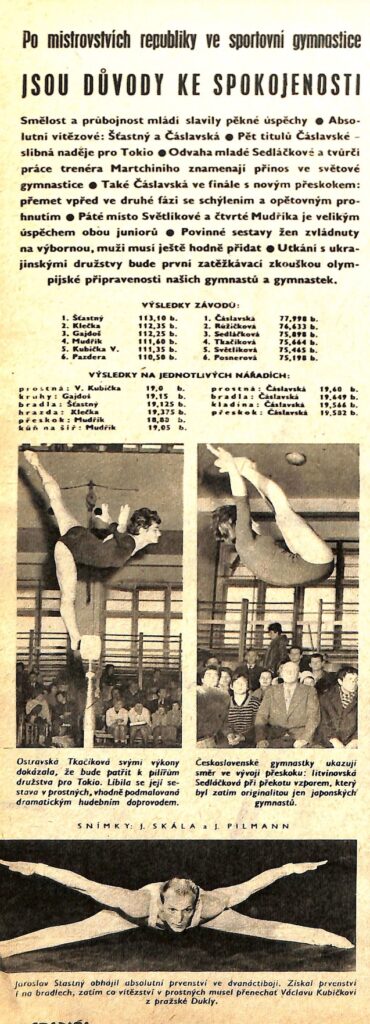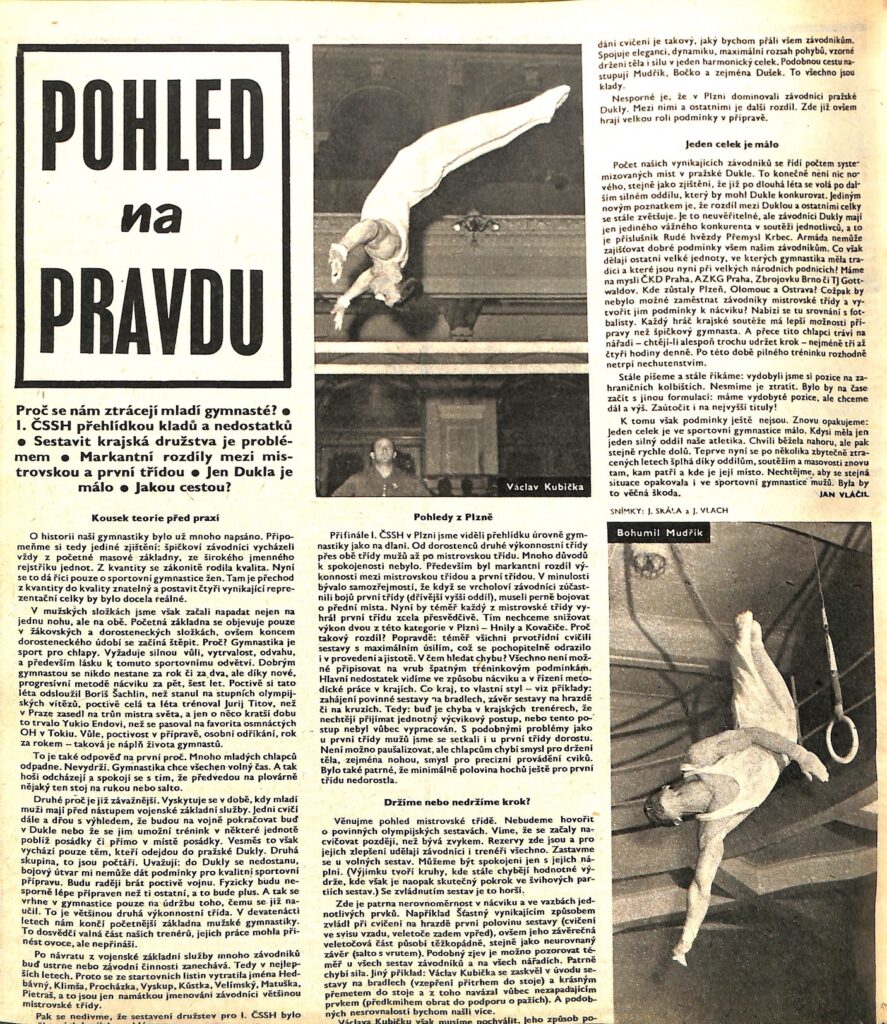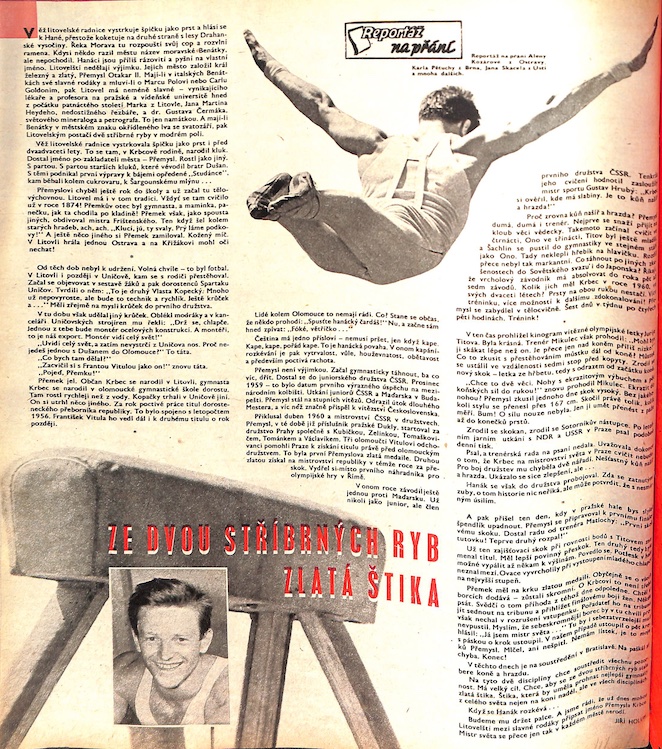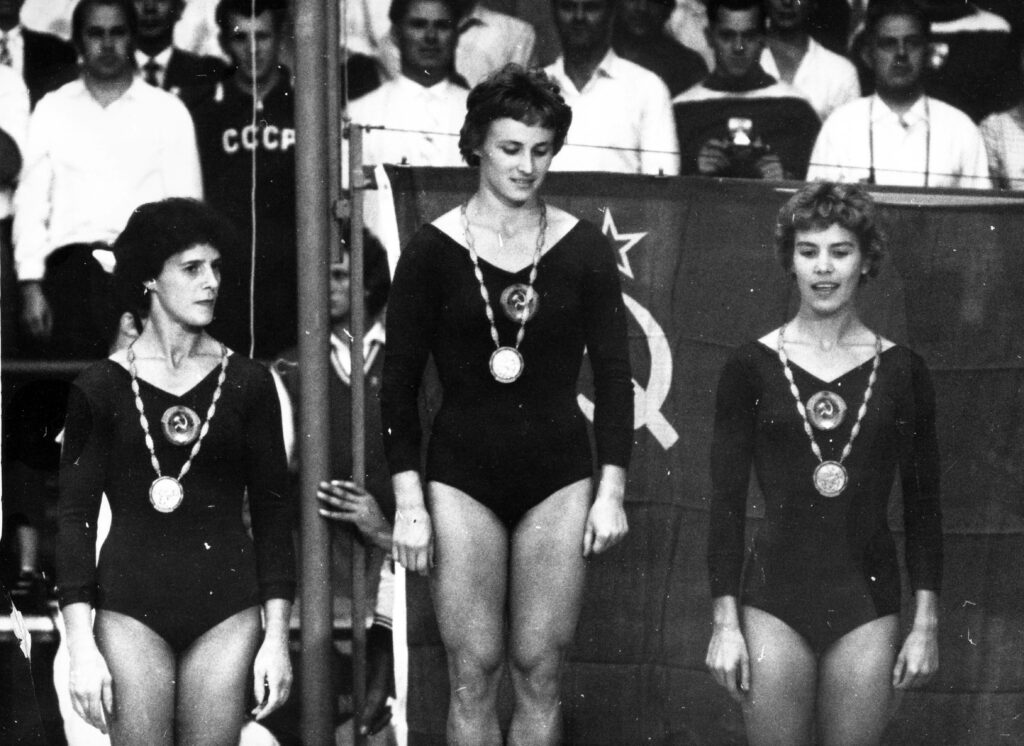At the 1966 World Championships, the Czechoslovak women’s team finally defeated the Soviet team, and Čáslavská won the all-around title, defeating Kuchinskaya, who reportedly stated before the competition, “I will share the medals with Čáslavská!”
Stadión, a Czechoslovak sports magazine, dedicated several pages to the competition. The article’s tone was blunt in places. It criticized the complacency of the Czechoslovak men’s team, as well as the judges during the women’s event finals and Villancher’s interventions in the judging.
Note: Berthe Villancher, the President of the Women’s Technical Committee, was known for her interventions. For example, she intervened during Čáslavská’s beam routine at the 1968 Olympics and during Tourischeva’s beam routine at the 1969 European Championships.
It also provided interesting tidbits of information. For example, there were spies at the competitions in Czechoslovakia before the World Championships; the Czechoslovak pianist may have been the key to victory; and the Czechoslovak gymnasts’ shoes were believed to have magical powers.




